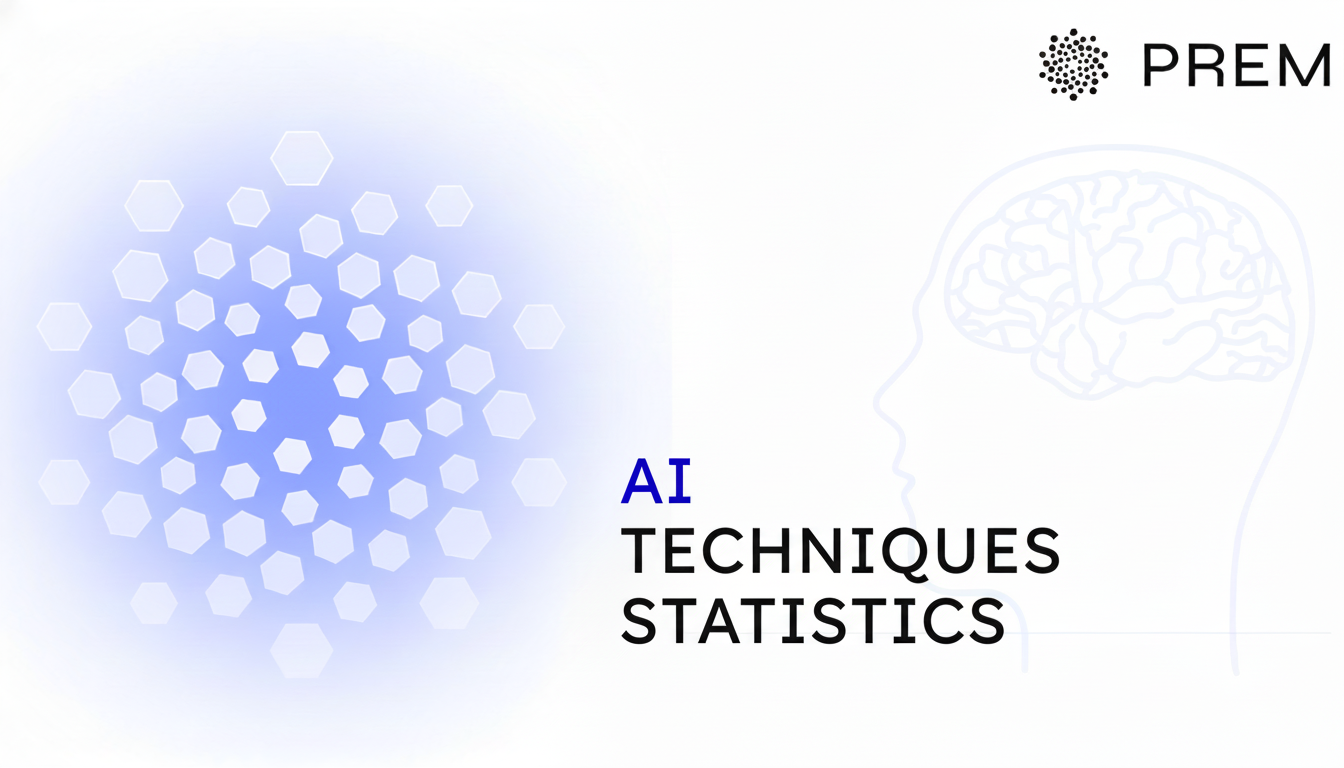10 Privacy-Preserving AI Techniques Statistics
Explore 10 key stats on privacy-preserving AI. Learn how federated learning cuts data transfer by 99%, encryption improves 100×, and sovereign AI reduces compliance costs by 40% while protecting sensitive data.

Key Takeaways
- 68% of consumers express concern about online privacy, with 57% viewing AI as a growing threat to personal data
- Organizations implementing privacy-preserving AI report 30-40% reduction in data handling compliance costs
- Federated learning reduces data transmission by up to 99% compared to centralized approaches
- The privacy-enhancing technologies market will grow at 25.3% CAGR from 2025-2030
- Fully Homomorphic Encryption has achieved 100x performance improvements
Privacy-preserving AI has evolved from theoretical research to essential enterprise infrastructure as organizations confront the dual challenge of leveraging sensitive data for AI innovation while maintaining compliance with increasingly stringent regulations. Traditional AI approaches force a false choice between data utility and privacy protection, requiring organizations to either centralize sensitive information—creating massive security risks—or abandon valuable AI applications entirely. Prem Studio eliminates this tradeoff through built-in privacy agents with automatic PII redaction and sovereign deployment. It supports agentic synthetic data generation, LLM-as-a-judge–based evaluations (including bring-your-own evaluations), and controlled in-environment model customization — allowing organizations to turn private business data into specialized language models without exposing sensitive information or sacrificing performance.
Privacy-Preserving AI Market Overview and Growth Statistics
1. 68% of consumers express concern about online privacy, with 57% specifically viewing AI as a growing threat to their personal data
Consumer privacy concerns have reached critical mass, fundamentally reshaping enterprise AI deployment strategies. The specific anxiety around AI reflects widespread awareness that machine learning systems process unprecedented volumes of personal information—often without transparent consent mechanisms or clear understanding of how data feeds model training. This consumer sentiment translates directly into business risk through:
- Regulatory pressure as governments respond to constituent privacy demands
- Competitive disadvantage for organizations perceived as privacy-hostile
- Legal liability exposure from data protection violations
- Customer churn when privacy breaches erode trust
Organizations implementing sovereign AI architectures address these concerns at the infrastructure level, maintaining complete data sovereignty where sensitive information never leaves customer-controlled environments.
2. Privacy-enhancing technologies market projected to grow at 25.3% CAGR from 2025-2030
The explosive market expansion significantly outpaces general AI market growth, indicating that privacy capabilities are transitioning from optional features to competitive requirements. This acceleration reflects multiple converging factors:
- GDPR mandates data protection by design and by default (Article 25), while the EU AI Act sets obligations for high-risk AI including data governance, transparency, and risk management—both frameworks are accelerating privacy-first approaches
- Enterprise risk management prioritizing data sovereignty as cyberattack surface areas expand
- Technical maturation making privacy-preserving techniques practical for production workloads
- Competitive differentiation as privacy capabilities become customer selection criteria
The growth trajectory validates the strategic bet on privacy-first AI architectures, where organizations building with enterprise compliance from the outset avoid costly retrofitting as regulations tighten.
3. 60% of AI-related security incidents involve unauthorized data access or privacy breaches
Privacy breaches represent the predominant AI security risk category, surpassing traditional threats like availability attacks or integrity violations. The high incident rate stems from AI systems' fundamental architecture—they ingest vast datasets, create persistent representations in model weights, and expose query interfaces that adversaries exploit to extract sensitive training data. Common attack vectors include:
- Model inversion attacks reconstructing training data from model outputs
- Membership inference determining whether specific individuals' data was used in training
- Prompt injection manipulating systems to reveal confidential information
- API exploitation extracting proprietary data through carefully crafted queries
Organizations deploying privacy-preserving frameworks with state-of-the-art encryption defend against these attacks at the architectural level rather than attempting reactive detection and response.
Federated Learning Adoption Statistics and Performance Metrics
4. Federated learning implementations reduce data transmission requirements by up to 99% compared to centralized training approaches
Bandwidth reduction represents one of federated learning's most tangible benefits, enabling AI development across distributed datasets without the cost and privacy risk of data centralization. Instead of transmitting raw data to central servers, federated approaches train local models on decentralized data and aggregate only model updates—typically megabytes instead of terabytes. This architecture delivers:
- Dramatic cost savings by eliminating massive data transfer expenses
- Privacy preservation by keeping sensitive data at its origin
- Regulatory compliance with data residency requirements
- Faster model iteration by parallelizing training across distributed nodes
Organizations implementing edge deployment strategies leverage federated learning to train models across thousands of devices while maintaining individual data privacy.
Homomorphic Encryption Implementation Statistics
5. Fully Homomorphic Encryption operations have seen 100x performance improvements
Computational efficiency breakthroughs have transformed FHE from theoretical construct to viable production technology, addressing the historical performance bottleneck that limited privacy-preserving AI to narrow use cases. The Orion framework developed by NYU researchers demonstrates how novel optimization techniques reduce processing overhead while maintaining mathematical privacy guarantees. This performance leap enables:
- Real-time inference on encrypted data for interactive applications
- Practical multi-party computation across organizational boundaries
- Secure cloud processing without exposing sensitive data to providers
- Cost-effective deployment of privacy-preserving AI at enterprise scale
Organizations implementing encryption-based privacy can now achieve acceptable performance for many workloads, expanding the viable use cases beyond the limited scenarios where FHE was previously practical.
6. Implementation complexity leads to misconfiguration in 65% of early privacy-preserving AI deployments
Configuration errors represent the primary failure mode for privacy-preserving systems, as teams struggle with complex parameter selection between privacy guarantees and model utility. Misconfigured implementations either provide insufficient protection—creating false security confidence—or excessively degrade performance, rendering models useless. Common configuration challenges include:
- Privacy budget allocation across multiple query types
- Noise calibration balancing privacy and accuracy
- Encryption parameter selection affecting performance
- Secure aggregation protocol tuning in federated settings
Autonomous model customization systems address this complexity by automatically optimizing privacy-utility tradeoffs based on dataset characteristics and performance requirements, eliminating the manual parameter tuning that causes most deployment failures.
Differential Privacy Deployment Statistics and Privacy Budgets
7. 85% of AI practitioners consider privacy-preserving techniques essential for complying with evolving regulations like the EU AI Act
Regulatory necessity has transformed privacy-preserving techniques from optional best practices to compliance requirements, with practitioners recognizing that future regulations will mandate technical privacy protections. The EU AI Act specifically references privacy-by-design principles and technical measures for high-risk systems. This recognition drives adoption through:
- Proactive compliance positioning ahead of regulatory enforcement
- Risk mitigation against emerging legal frameworks
- Competitive advantage in privacy-conscious markets
- Future-proofing AI systems against tightening requirements
The sharp increase from 62% two years ago indicates rapid maturation in understanding privacy as fundamental infrastructure rather than optional feature.
Privacy-Preserving Model Training Statistics and Efficiency
8. Implementation of privacy-preserving AI frameworks typically requires 3-6 months for initial deployment
Deployment timelines for privacy-preserving systems reflect both technical integration complexity and organizational change requirements. The timeline breaks down as:
- Months 1-2: Privacy impact assessment, technique selection, and infrastructure preparation
- Months 3-4: Implementation of chosen privacy mechanisms and parameter tuning
- Months 5-6: Validation, testing, and production deployment with monitoring
Organizations can accelerate deployment by choosing platforms with built-in privacy controls rather than building privacy infrastructure from scratch, reducing the 3-6 month timeline by eliminating custom development of privacy mechanisms.
Enterprise Privacy-Preserving AI Adoption Statistics
9. Organizations implementing privacy-preserving AI report 30-40% reduction in data handling compliance costs
Compliance cost savings emerge from reduced data movement, storage, and governance overhead when privacy is embedded in architecture rather than layered on top. Traditional centralized approaches require:
- Extensive data governance processes for all centralized datasets
- Redundant security controls at multiple infrastructure layers
- Continuous compliance auditing of data access and usage
- Incident response capabilities for potential breaches of centralized repositories
Privacy-preserving architectures eliminate many of these costs by preventing sensitive data centralization, dramatically reducing the attack surface and compliance scope. Organizations deploying on-premise AI solutions with complete data sovereignty maximize these savings by avoiding cloud provider compliance dependencies entirely.
10. 93% of large enterprises now require AI vendors to support data sovereignty and in-environment deployment
Most large enterprises now prioritize sovereignty in vendor selection, meaning vendors must prove data residency, isolation, and control — not just model quality. This effectively forces AI platforms to run inside the customer’s environment (on-prem, VPC, or private cloud) instead of pulling sensitive data into a third-party service. This shift is driven by:
- Regulatory pressure around data residency, auditability, and cross-border data exposure under laws like GDPR and the EU AI Act
- Internal security teams rejecting black-box AI services that require uploading sensitive data to an external provider
- Desire to avoid vendor lock-in and maintain full control of logs, prompts, and outputs
- Competitive pressure: buyers are now disqualifying vendors that can’t offer sovereign / in-tenant deployment, even before technical evaluation
Frequently Asked Questions
What is “privacy-preserving AI”?
Privacy-preserving AI refers to techniques, architectures, and workflows that let organizations build and deploy AI models without exposing, centralizing, or leaking sensitive data. Instead of copying all data into one training environment (which creates a big breach and compliance risk), these approaches keep data protected — for example, by encrypting it during use or training models where the data already lives.
Why does privacy matter so much in AI right now?
Because people are paying attention. 68% of consumers say they’re worried about online privacy, and 57% specifically see AI as a growing threat to their personal data. When customers believe AI is mishandling data, the business takes a hit — through churn, legal exposure, and brand damage. That pressure is now shaping how companies build AI systems.
How do privacy-preserving techniques reduce compliance costs?
Organizations that build AI with privacy controls at the architectural level (instead of patching privacy on top after the fact) report 30–40% lower data handling compliance costs. They spend less on securing massive centralized data lakes, less on auditing broad access, and less on breach response, because sensitive data isn’t being copied everywhere in the first place.
Is this a temporary phase until regulation “catches up”?
No. The direction of travel is the opposite: regulation is getting stricter and customers are getting louder. Privacy-preserving AI is not a stopgap — it’s becoming the default expectation for how responsible AI is built, deployed, and sold.
